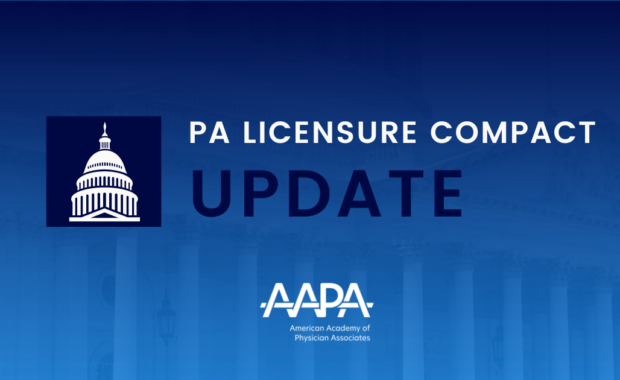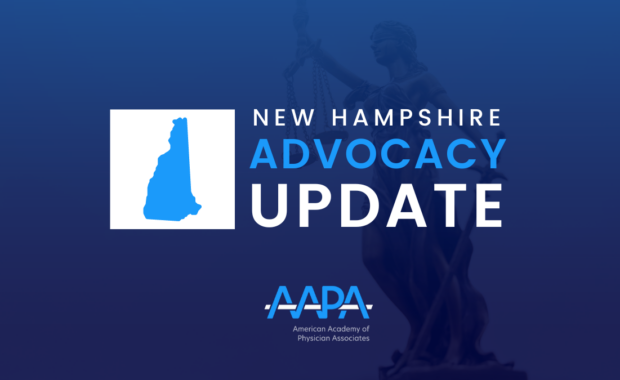How PAs Use AAPA’s Salary Report in Contract Negotiations
How PAs Have Made the Report Work for Them
February 12, 2018
By Jennifer Hohman
Only AAPA offers the in-depth data profiling of every aspect of PA compensation on the scale and degree of detail that is found in the yearly-updated Salary Report. But, they can only do it with your data! That is why it is so important to invest the 20 minutes it will take to respond to AAPA’s 2018 Salary Survey.
In my work as a PA career coach and negotiation advocate, it’s rewarding to see that in many cases, a quality employer will respond when PAs proactively negotiate and make use of the amazing data riches of the Salary Report.
It is always worth the effort to engage in a discussion of all aspects of job—from salary to benefits and schedule. The AAPA Salary Report can help you establish targets in each aspect of your contract, which is reassuring and helpful indeed amid the attendant excitement and pressure of a new job offer. Here are examples of PAs who have used the AAPA Salary Report to research and improve employment offers from a range of employer types and practice specialties to encourage its use and application to contract negotiations.
Example One: A New Graduate Negotiating Increased Base Salary
A soon-to-graduate PA contacted me for help negotiating her first PA job offer. The offer was in the specialty she had a special passion for—pediatrics–which we factored into the negotiation process. This was the only offer that had come through in this field after long months of applications. Assessing the salary proposed in the offer, we found that it only matched the 10th percentile of PA salaries for new graduates in her state, not an option for my client given high costs of living and student loan repayment concerns. In our counter offer, we cited data from the Salary Report to make the case for raising her salary to the median range for new graduates in this specialty. As a result, this PA was able to launch her practice in pediatrics both excited about her long-envisioned clinical path and secure about starting out with a fair salary. This helped lay a foundation for career-long income growth.
Example Two: Moving for a New Job Made More Affordable with AAPA’s Salary Report
Another client was at a transition point in his personal and professional life and was willing to relocate from the small town where he’d had been practicing for the last decade. He was recruited by a practice several states away in the specialty where he’d established a stellar reputation. In order to improve the overall compensation and ease costs of moving for an out-of-state offer he received, we cited a very the useful data found in Table 31, (Amount of Additional Compensation from Primary Clinical Employer by State) that includes data on employer-sponsored relocation expenses. The employer was eager to recruit my client and offered him the 75th percentile reported for this category of compensation—and his move was made $5,000 less expensive.
Example Three: Negotiating a Higher Hourly Wage
A PA I worked with as part of a Contract Consultation was offered a position at a local hospital, with an opportunity to play a leading role in providing emergency medicine services there. The benefits were outstanding, but the hourly pay matched what my PA client had been earning four years previously—and she was not willing to go backwards in compensation despite other positive aspects of the offer. In this instance, our argument for increased hourly compensation was supported by the data in Table 15 (Hourly Wage by Major Specialty Area and Years of Experience) and the employer reconsidered the original offer and replaced it with a rate that was in between the Median and 75th percentile for her specialty.
A recent client who used Salary Report to negotiate a sign-on bonus reads the Salary Report cover to cover each year, stating “I review it in detail every year flagging my specialty and experience and locations.” This is good advice! I suggest that everyone study the Report in depth and seek out the tables that are most germane to your particular negotiation concerns, whether you place highest priority upon salary, specific benefits, or other job elements. Also look for new data categories as the Report is constantly evolving.
What to do when an employer doubts or disparages the AAPA as a data source concerning PA compensation? The data experts at AAPA have these helpful replies:
Accuracy
AAPA data is within $1,500 of the amount of the best employer-reported data available from the Bureau of Labor Statistics (BLS). It is also within $1,500 of the NCCPA which has self-reported salary data on more than 50,000 PAs. Because of this, we know our data is accurate. The MGMA data, which is often used by employers, is based on a very limited number and type of organizations. As such, it should be used with caution and only with those organizations that are similar to the reporting organizations.
Detail
AAPA data is the only source of data on just salary and just bonus. We break out data out into the simplest form in order to allow organizations to make the most accurate comparisons. Neither BLS nor NCCPA do the same. The AAPA Salary Reports highlight the differences.
AAPA is also the only source that provides details into what goes into bonuses, what benefits are received, and paid time off. There are all factors in total compensation that employers and employees alike should be interested in.
Breakouts
The PA profession is very diverse and compensation (amount, type, bonuses) varies based on a variety of factors. AAPA salary reports are the only source for the detailed breakouts by location, specialty, setting, employer, and experience. In total, AAPA is the only major salary data source that provides the details both employers and employees need to accurately gauge both salary and benefits. Put it to work for you!
Complete AAPA’s 2018 Salary Survey
Jennifer Anne Hohman is founder of PA Career Coach, a service dedicated to helping PAs create healthy and sustainable careers. Contact her at [email protected].
Thank you for reading AAPA’s News Central
You have 2 articles left this month. Create a free account to read more stories, or become a member for more access to exclusive benefits! Already have an account? Log in.



